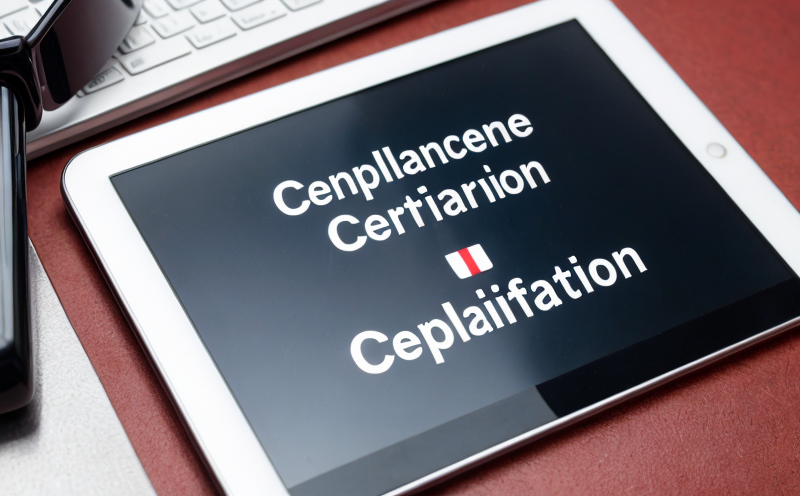Compliance and Certification: Understanding the Importance of Regulatory Adherence
In todays complex business environment, compliance and certification have become essential for organizations to navigate the intricate web of regulations and standards that govern various industries. Compliance refers to the process of adhering to laws, regulations, and industry-specific guidelines, while certification is a formal recognition of an organizations ability to meet specific requirements. In this article, we will delve into the world of compliance and certification, exploring their significance, types, and best practices for implementation.
Why is Compliance and Certification Important?
Compliance and certification are crucial for organizations to avoid penalties, reputational damage, and financial losses resulting from non-compliance. Here are some key reasons why:
Ensures regulatory adherence: Compliance helps organizations meet the requirements set by governments, industry associations, or other regulatory bodies.
Protects reputation: Demonstrating compliance with regulations boosts an organizations credibility and trustworthiness among customers, partners, and stakeholders.
Reduces risks: By adhering to standards and guidelines, organizations can minimize the risk of non-compliance-related fines, lawsuits, and damage to their brand.
Enhances competitiveness: Certification can give an organization a competitive edge in the market by demonstrating its commitment to quality, safety, or environmental sustainability.
Types of Compliance and Certification
There are various types of compliance and certification programs, including:
ISO (International Organization for Standardization) certifications: These certifications, such as ISO 9001 (quality management) and ISO 14001 (environmental management), ensure an organization meets international standards.
Industry-specific certifications: For example, healthcare organizations may require HIPAA compliance (Health Insurance Portability and Accountability Act) or pharmaceutical companies might need GMP certification (Good Manufacturing Practice).
Regulatory certifications: Compliance with laws and regulations such as GDPR (General Data Protection Regulation), SOX (Sarbanes-Oxley Act), or PCI DSS (Payment Card Industry Data Security Standard).
Understanding Certification Programs
Heres a detailed explanation of the certification process:
Certification body selection: Organizations select a certification body, which is responsible for evaluating and auditing their compliance with specific standards or regulations.
Gap analysis: The organization identifies areas where they need improvement to meet the required standard.
Implementation plan: A roadmap is created to address gaps and implement necessary changes.
Audit and assessment: The certification body conducts an audit to verify the organizations compliance with the standard.
Certification: Upon successful completion of the audit, the organization receives certification.
Here are some key points to consider when selecting a certification program:
Cost: Certification programs can be costly; ensure you choose one that aligns with your budget and business goals.
Scope: Verify that the certification program covers your specific industry or area of interest.
Reputation: Research the certification bodys reputation, credibility, and experience in your sector.
Certification duration: Understand how long the certification is valid and what requirements must be met for renewal.
Best Practices for Compliance and Certification
To ensure effective compliance and certification, follow these best practices:
Assign a dedicated team: Appoint a team to oversee compliance and certification efforts, ensuring that responsibilities are clear and roles are well-defined.
Establish a risk management plan: Identify potential risks and develop strategies to mitigate them.
Provide ongoing training: Ensure employees understand the importance of compliance and receive regular training on relevant standards and regulations.
Conduct regular audits: Schedule periodic audits to verify compliance and identify areas for improvement.
Frequently Asked Questions
Here are some frequently asked questions about compliance and certification:
1.
Q: What is the difference between compliance and certification?
A: Compliance refers to adhering to laws, regulations, and industry-specific guidelines, while certification is a formal recognition of an organizations ability to meet specific requirements.
2.
Q: Why do organizations need to comply with regulatory requirements?
A: Non-compliance can result in penalties, reputational damage, and financial losses; compliance ensures regulatory adherence, protects reputation, reduces risks, and enhances competitiveness.
3.
Q: How long does certification typically last?
A: Certification duration varies depending on the program and industry; some certifications are valid for a set period (e.g., 3 years), while others require ongoing maintenance or renewal.
4.
Q: Can I implement compliance and certification programs in-house, or do I need to hire external experts?
A: Its recommended to hire external experts, especially for complex certifications like ISO or industry-specific requirements; they can provide valuable guidance and ensure accurate implementation.
5.
Q: What are some common mistakes organizations make when implementing compliance and certification programs?
A: Common errors include inadequate planning, insufficient resources, poor communication among stakeholders, and failure to address gaps in existing processes.
6.
Q: How do I choose the right certification program for my organization?
A: Research the certification bodys reputation, credibility, and experience in your sector; consider factors like cost, scope, and certification duration when selecting a program.
7.
Q: What are some best practices for maintaining compliance and certification over time?
A: Regular audits, ongoing training, and risk management planning can help ensure continued compliance and certification.

































